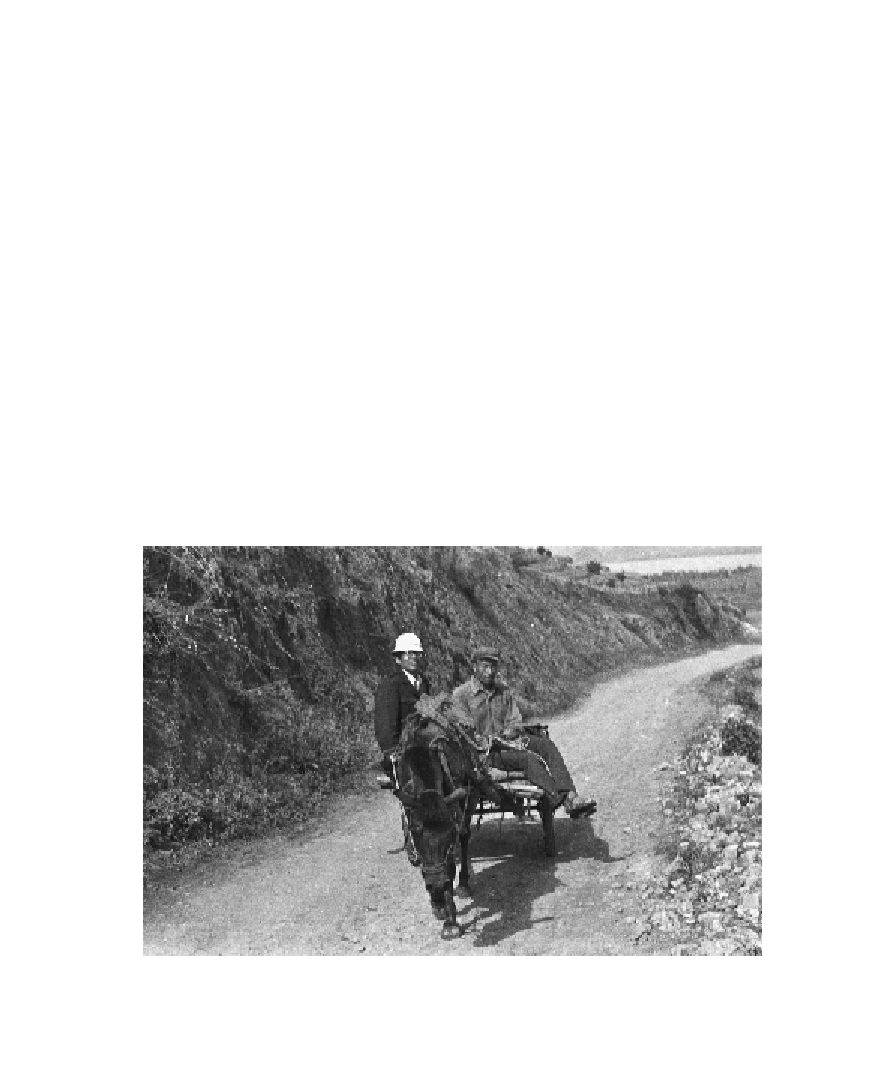Geoscience Reference
In-Depth Information
rich pickings for palaeontologists. Some 80 years went by, during
which time the political landscape of this region shifted dramatically,
and a young Chinese geologist working at the Nanjing Institute of
Geology and Palaeontology now passed this way. His name was Hou
Xianguang, and he was intrigued by a group of small arthropods
called the Bradoriida. Mansuy himself had collected a few specimens
of these animals that were once thought to be fossil ostracods (seed
shrimps). Although not a native of southern China—he was born in
Jiangsu Province in 1949—Hou Xianguang was to make one of the
most extraordinary fossil discoveries in history. It was a discovery
that would elevate Yunnan Province into the premier league of fossil
localities.
It was during the rainy season, on 1 July 1984, that Hou Xianguang
left his lodgings at Dapotou village. He had hired a local farmer and
cart to help with the excavation and transport of the fossils (Fig. 15).
fig. 15. Hou Xianguang (wearing the white hat) on the way to collecting
Chengjiang fossils in the summer of 1984.


Search WWH ::

Custom Search